The Coffered Ceiling of the Historic Wing
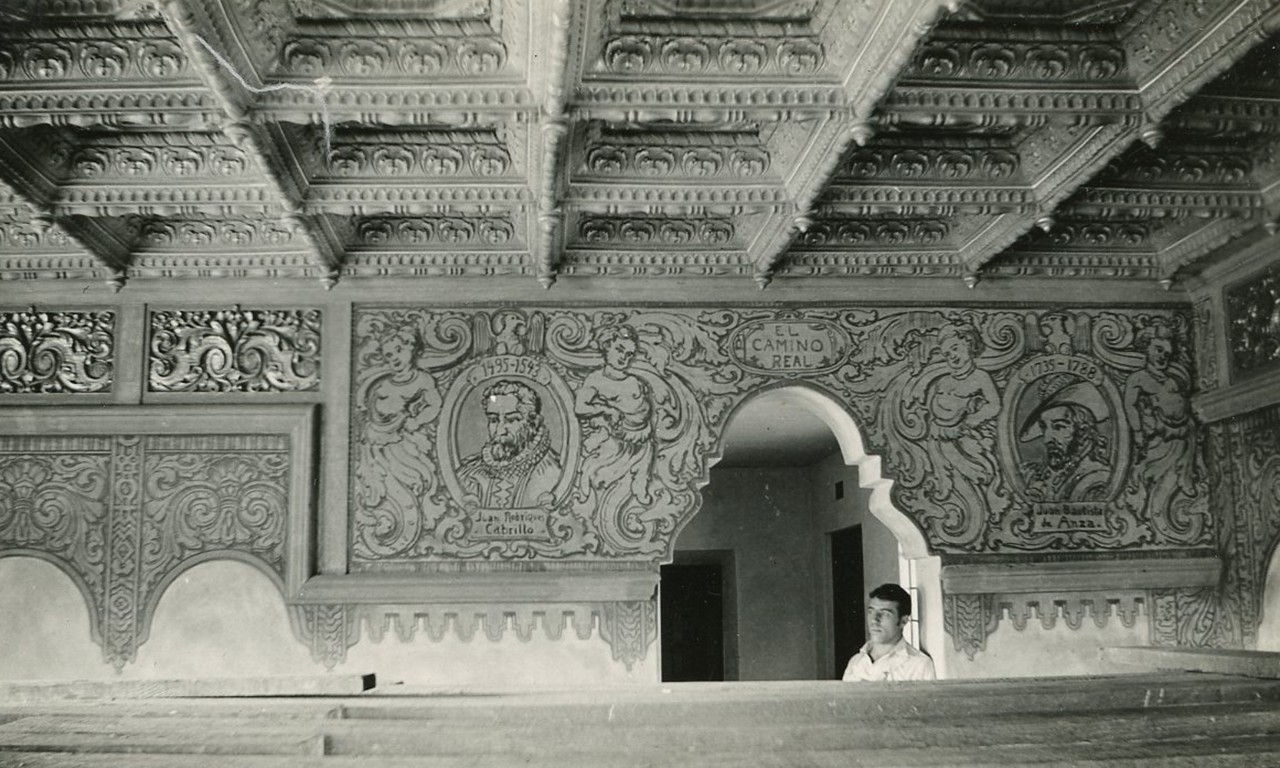 |
| Schabell in the Main Exhibit Room, 1932 Unknown photographer; Bowers Museum, Santa Ana, California Photographic print; 2 3/4 × 4 1/2 in. 77.35.1H Gift of Carl Schabell |
Look Up
The next time you are in California Legacies: Missions and Ranchos, be sure to tilt your gaze skywards to see the incredible coffered ceilings above. Original to the 1932 construction of the museum, in August of 2021 the ceilings in the Fluor (upstairs) and Segerstrom (Missions and Ranchos) Galleries were formally accessioned and assigned the numbers 1932.2.1-.2 due to their status as important parts of the museum’s history. This post takes a close look at the construction of the ceiling in the Segerstrom Gallery, and the artists who led this and other projects around the historic wing, Martin Syvertsen and his assistant, Carl Schabell.
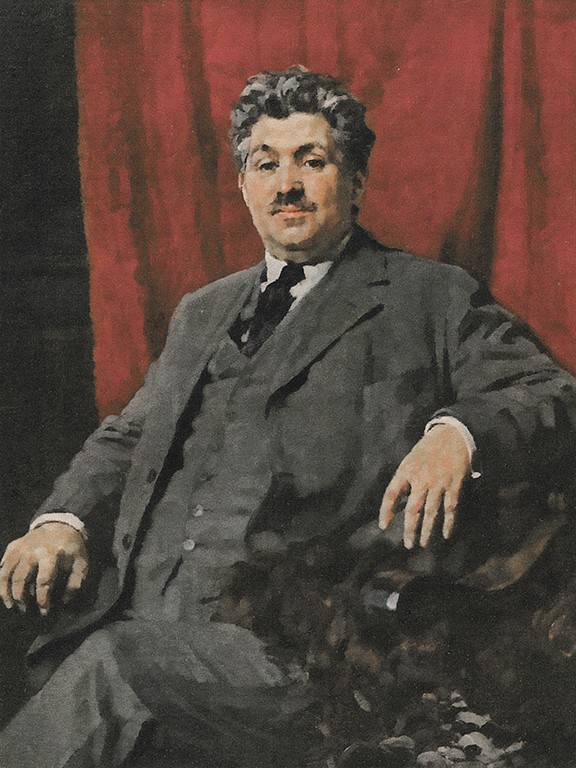 |
| Martin Syvertsen, early 20th century Unknown artist |
Norway Man
Martin Sevrin Syvertsen was born in Kristiansand, Norway on November 21, 1874. His mother, Anne, came from Vennesla and married a tanner from Mandal. As a young boy, he showed a great capacity for painting and drawing. Not long after he entered his teenage years, he started as an apprentice at Decorator Nilsen in Kristiansand. He went to technical school in the evenings at the same time. At 21 he went to Germany for further studies and within five years he had joined several art schools. Later, he went to Paris to study portrait painting. Around 1900 he briefly returned to Kristiansand before embarking on a sailing trip around the world and ultimately settling in San Francisco. He painted oil, watercolor, coal, and colored chalk murals in churches, theaters, and mausoleums, and did commissioned portraits all over California. His work took him all throughout California where he painted important religious and civic buildings, starlets, and just about everything in between. He reportedly became a millionaire, but by the time he painted the ceilings of the Bowers in 1932 had lost it all in the stock market crash. He returned to Norway at the onset of World War II and stayed with his sister at her family's farm through the war. He rented houses and did a lot of painting by the sea and in the nearby Setesdal Valley. After the war he was asked to return to Pasadena to paint in a mausoleum. He originally refused but later agreed and returned to Pasadena in 1947. He died later that same year, at the age of 73. Per his wishes, his remains were returned to Norway, and he is now buried in Kristiansand.
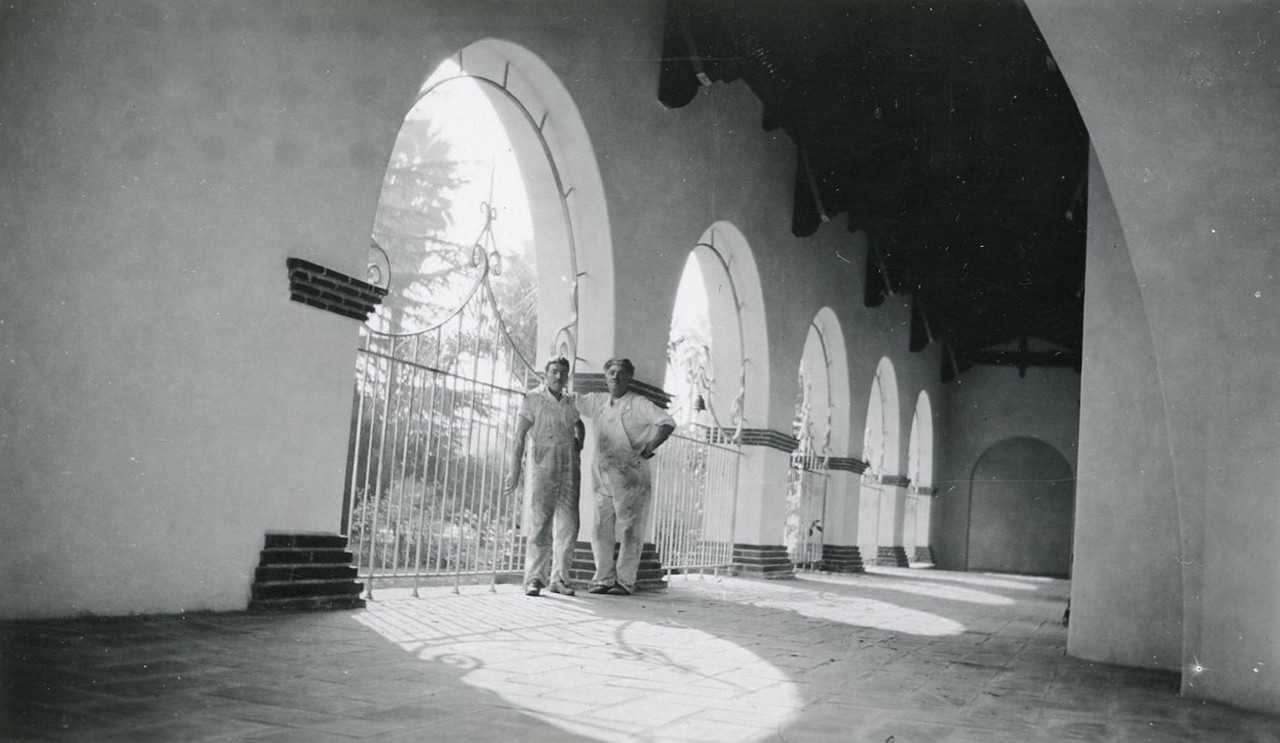 |
| Schabell and Syvertsen in the Courtyard Arcade, 1932 Unknown photographer; Bowers Museum, Santa Ana, California Photographic print; 2 3/4 × 4 1/2 in. 77.35.1C Gift of Carl Schabell |
For Whom Schabell Toils
Very little is known about the life of Carl (sometimes Karl) Schabell outside of his work at the Bowers and that he was originally born in Germany on December 20, 1906 and passed away in Seal Beach on May 27, 1996. He and Ada May Sharpless, the sculptor who created the Bowers’ statue of Juan Cabrillo in our Key Courtyard, visited the Bowers in the 1970s. The pair told museum staff about their work at the museum in the ‘30s and Schabell donated several photographs showing the work in progress. The history of the coffered ceiling has been pieced together in large part from this, early publications about the history of the museum’s building, and other interviews with past members of the Bowers Museum’s staff.
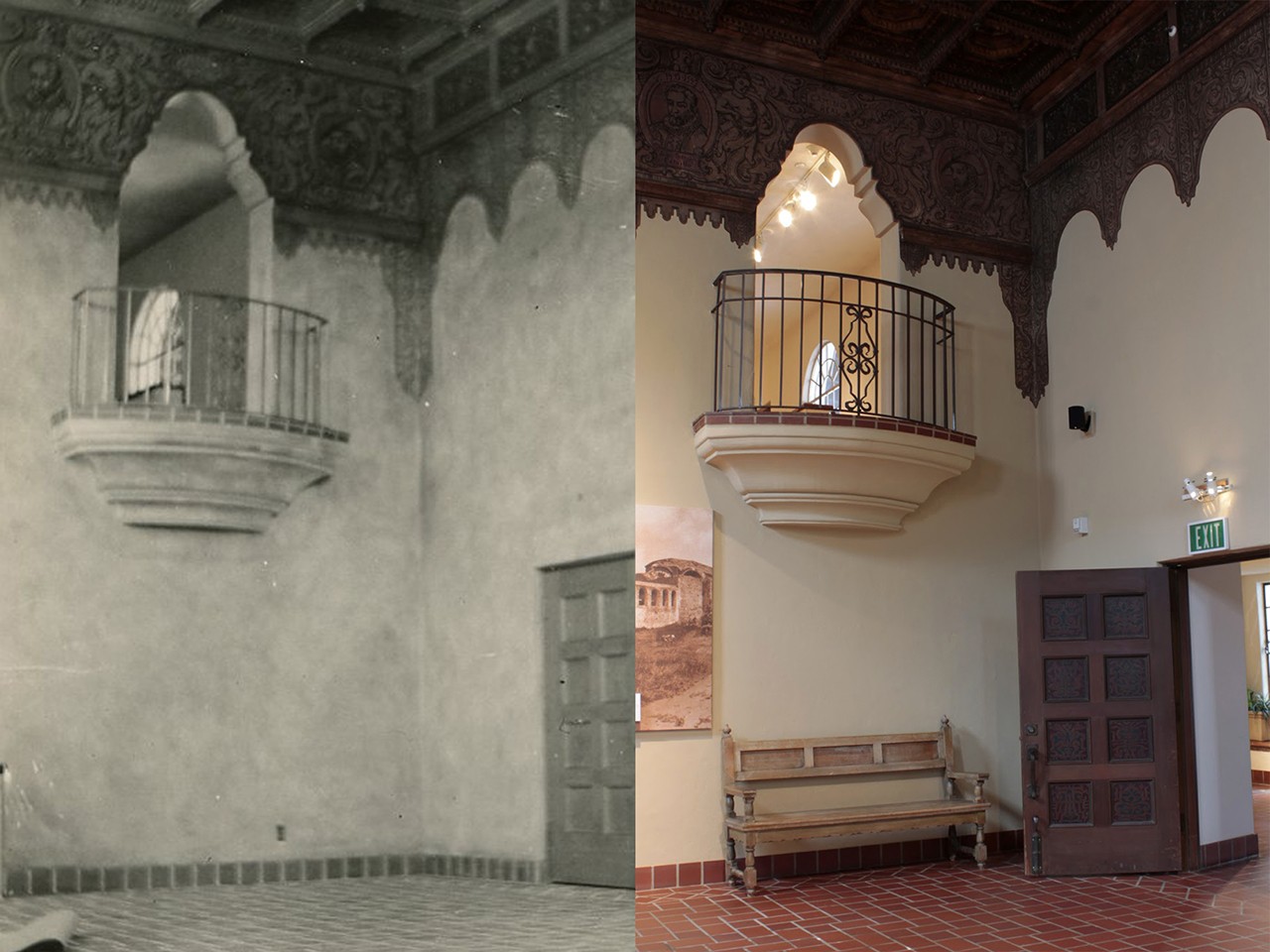 |
|
| Main Exhibit Room Entrance, 1932 Unknown photographer; Bowers Museum, Santa Ana, California Photographic print; 2 3/4 × 4 1/2 in. 77.35.1B Gift of Carl Schabell |
The Segerstrom Gallery entrance today. |
Coffering and Other Depressions
During construction of the museum in the early 1930s, Syvertsen and Schabell were hired to create decorative ceilings and doors throughout the historic wing for the museum’s grand opening in December of 1932. All the original ceilings of the old wing, not just those in the Fluor and Segerstrom Galleries were painted by the pair, though those not mentioned by name here were stenciled rather than painted by hand. Unfortunately, due to the Great Depression and a lack of funds, the museum did not officially open until 1936. So, although Syvertsen and Schabell were provided with room and board in a hotel across from the future museum, the bonus they were promised was not received until about six years after they had finished their work. According to Schabell, the two were only ever given about 10% of what they had originally been offered.
Desiring Something Moorish
The coffered ceiling was designed to match the mission revival aesthetic of the museum, and as such is created in the Spanish Moorish style. A single carved wooden mold was created and filled with ornamental plaster and #8 annealed galvanized wire to cast each of the ceiling’s 96 squares. To attach the decorative ceiling to hidden supports, the wire was pulled through ¾ inch hot rolled anchor channels and twisted in place. Independently cast rosettes decorate each square’s center. In addition to the very detailed and ornate squares of the ceiling, there are 34 identical molded plaster panels which wrap most of the room as a frieze. Additional decorative elements are painted in the same style as the molding, including a large section near the balcony which breaks the pattern of the rest of the room by depicting Juan Bautista de Anza and Juan Rodriquez Cabrillo. Anza, an early explorer of California, made his way from the southern coast to San Francisco, and Cabrillo was the very first European explorer of the California coast.
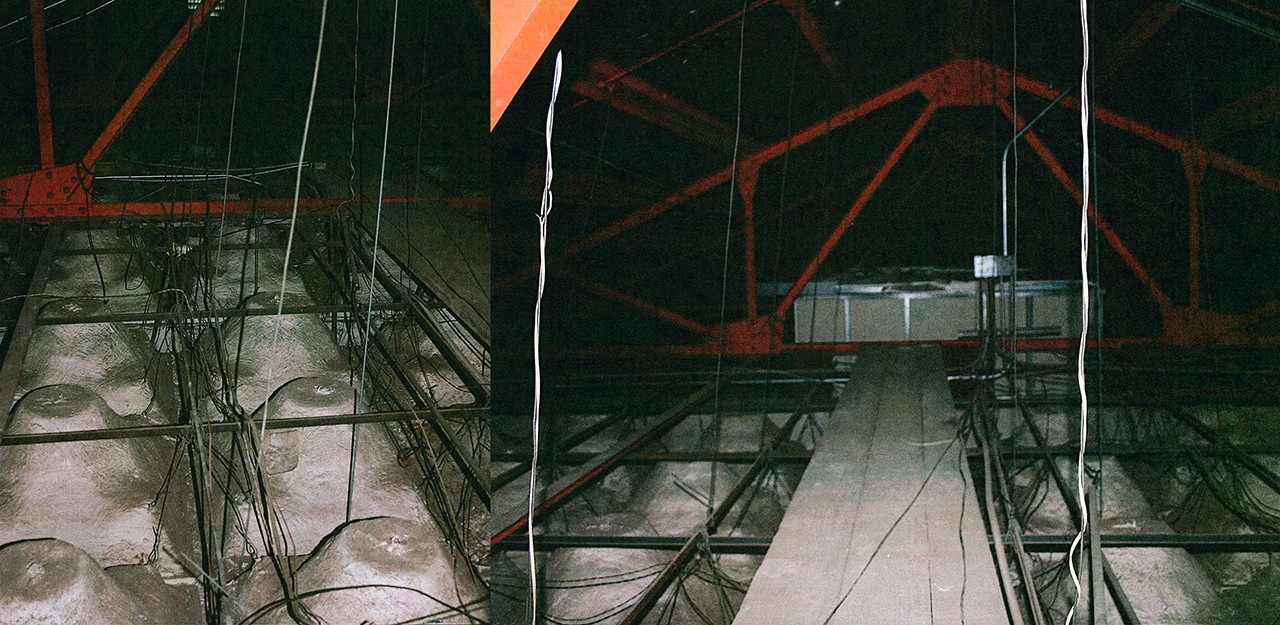 |
| Above the Segerstrom Gallery's ceiling. |
The Ceiling Today
By the end of the 20th century the ceiling was in need of minor maintenance. As a corollary to the 1991 renovation and additions to the Bowers Museum, the Balboa Art Conservation Center was awarded the contract to repair and clean the coffered ceiling, along with the other ceilings of the Bowers’ historic wing. Today the ceiling remains in good order as a reminder of California's Spanish roots.
Text and images may be under copyright. Please contact Collection Department for permission to use. Information subject to change upon further research.
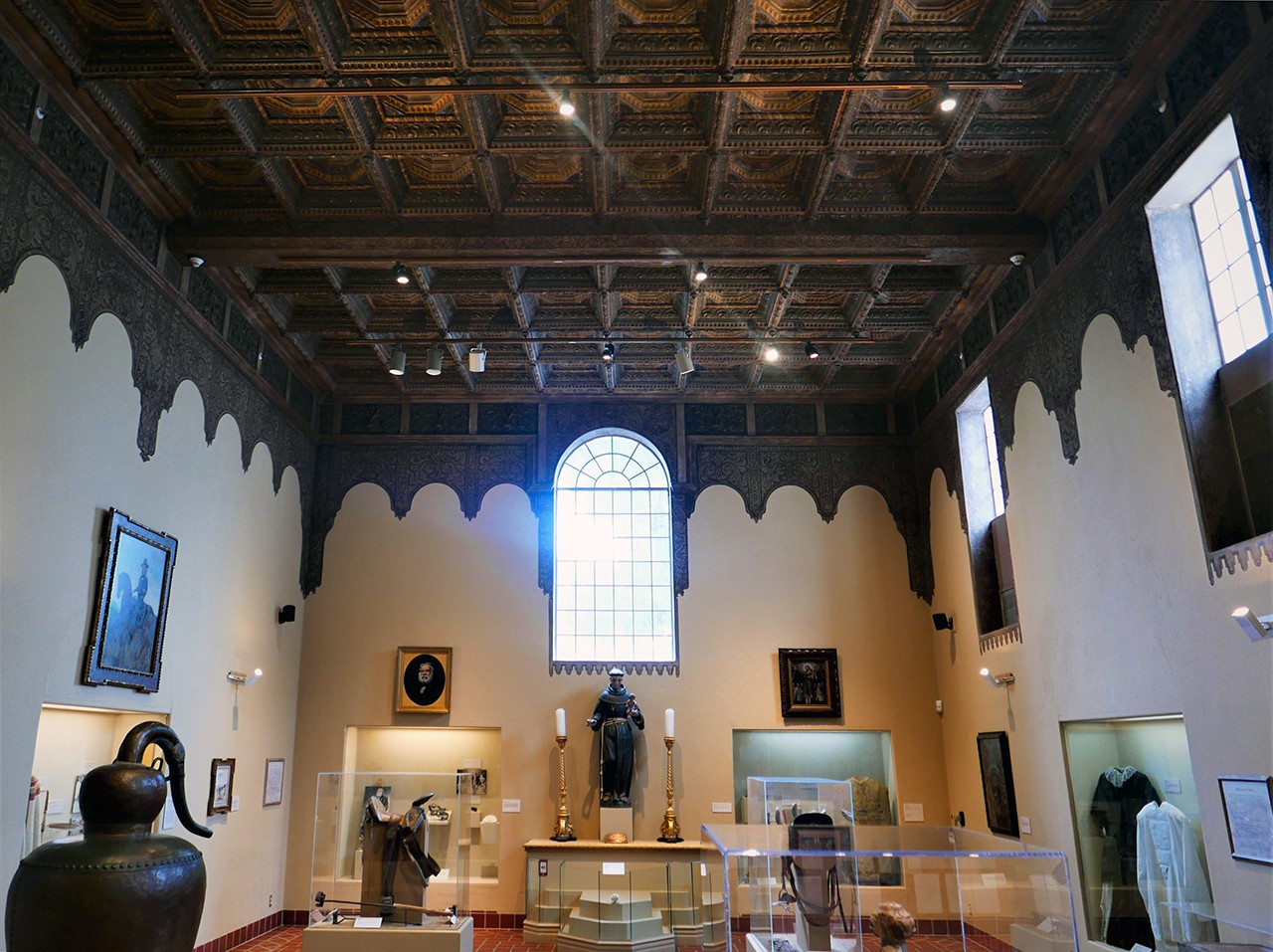
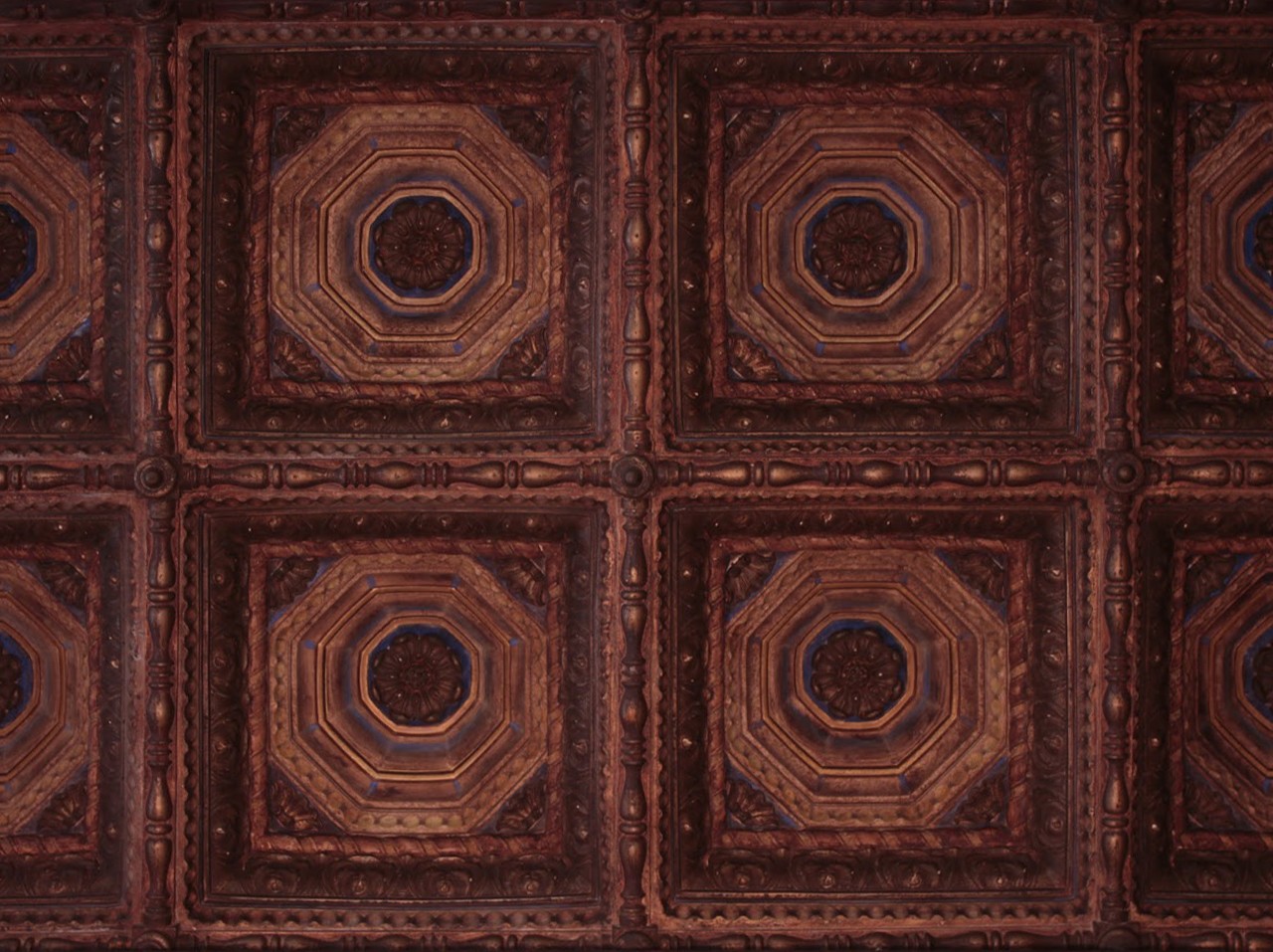
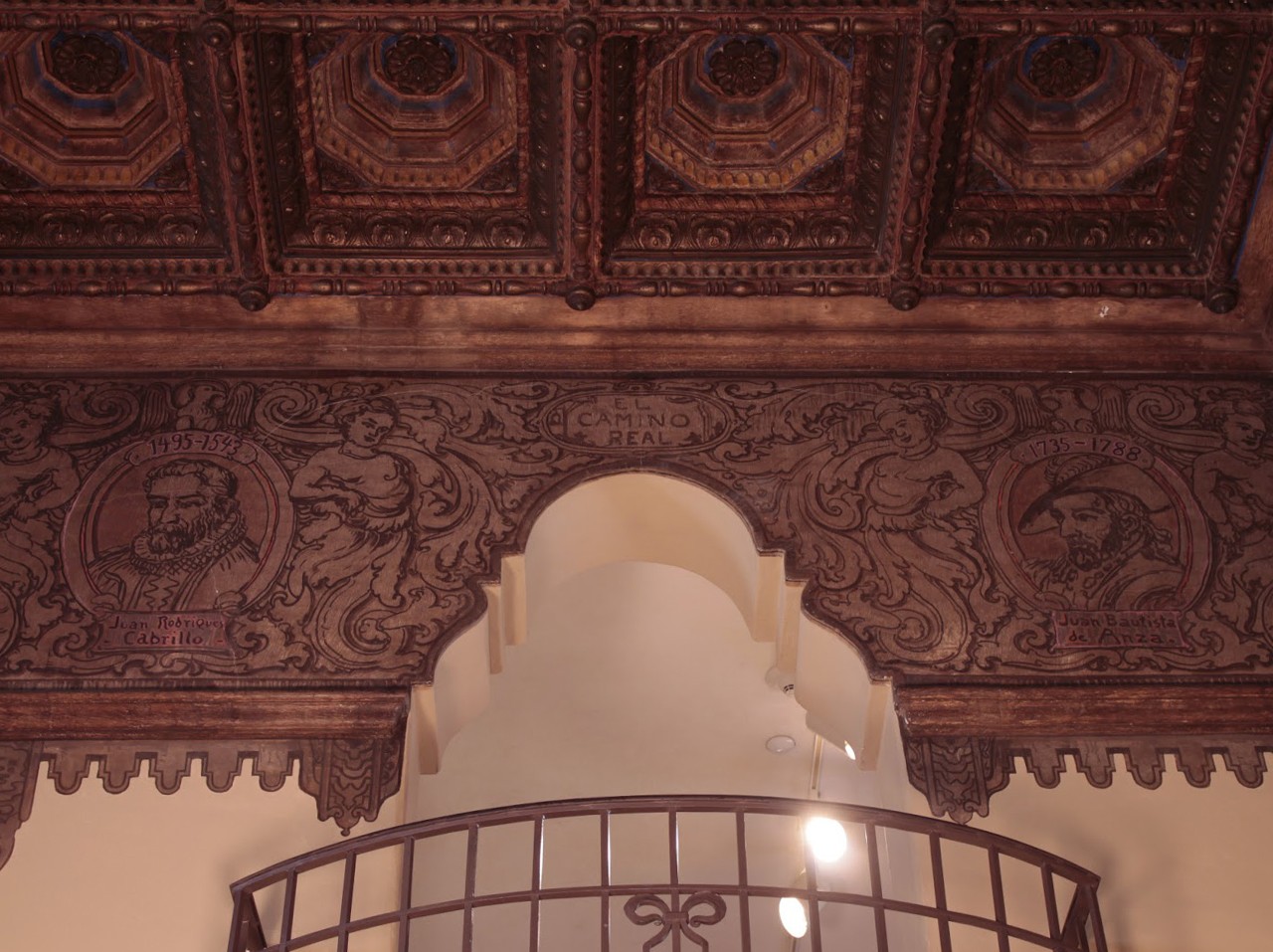
Comments